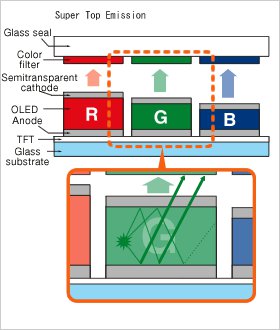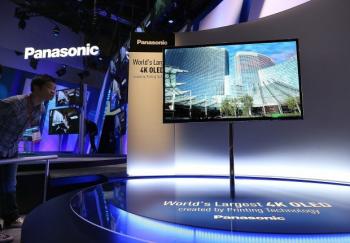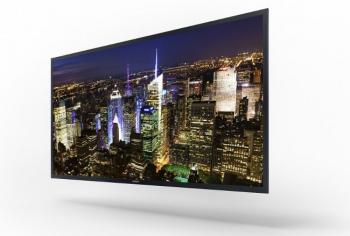Update: according to some people, Sony's (and Panasonic's) new OLED prototypes actually use white OLEDs with color filters (WOLED-CF) and not RGB sub pixels with color filters. Hopefully I'll get more information on this soon...
During CES 2013, both Sony and Panasonic unveiled 56" 4K OLED TV panel prototypes. Both panels use Sony's Super Top Emission structure. Those panels used color filters, which caused some confusion, so I thought I'd explain Sony's technology.

Super Top Emission utilizes RGB OLED subpixels, a microcavity structure and color filters. Sony says that this simultaneously enhances color purity, attains higher contrast and achieves lower power consumption.
It's important to note that this is not similar to LG's OLED TV design which also uses color filters. Sony is using RGB sub pixels and not white OLEDs (WOLED). This means that the light loss from the filter is minimal. It's not exactly direct-emission, but it's certainly not a WOLED-CF design.
 Panasonic 56-inch OLED prototype
Panasonic 56-inch OLED prototype
Sony explains that in normal OLEDs, circular polarizer are used to prevent the reflection of ambient light. This filter reduces the light emitted by the OLED (by more than a half according to Sony). The microcavities combined with the color filters prevents ambient light and enhances color purity - and all this at a higher efficiency than normal designs.
The microcavity structure results in light resonance effects between the two electrodes. As each OLED subpixel (the red, green and blue one) has a different light wavelength, Sony uses a different thickness as to produce the spectral peak wavelength (the optimum light) for each color. Only light that possesses the same wavelength as the distance between the "cathode electrode semitransparent film" and the "anode electrode reflective film" resonates. Light wavelengths that do not match are weakened. As a result, the spectrum of the extracted light is sharpened while brightness and color purity are enhanced. This ensures the strongest light from each color.
Comments
SID 04 29.5L
I couldnt understand why are they using color filter while the microcavity structure is purifying the color.
The cavity enhances the emission of light and the reflection of incident light at different wave lengths. Filter the "optimum reflection" wave length and it becomes an effective anti-reflective structure as well as an optimum emission structure.
because te emiters, even micro-cavity based do not emit only the main (R, B or G) wavelenght, and their light needs to be "purified" by the filter.



BIG news blah blah blah . THE BIG QUESTION IS?????
WHAT ARE THE LIFE TIMES ????
ARE THEY ANYWHERE NEAR COMMERCIAL GRADE SAY 100,000 hours ???
IF NOT JUST more CHEST PUMPING baloney...
Sorry folks for shouting been waiting for these TVs since 1999..
Steve